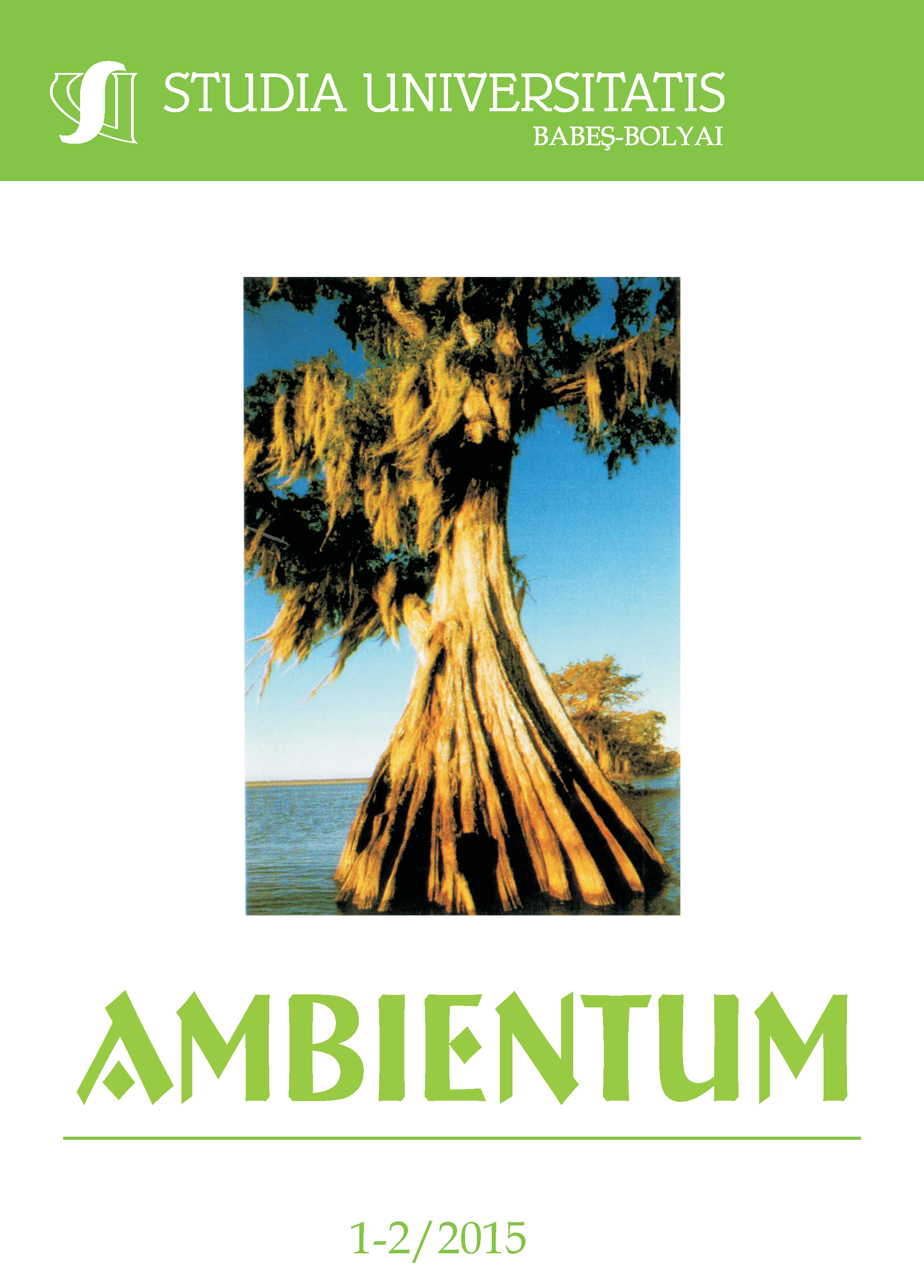COPPER INFLUENCE ON GERMINATION AND GROWTH OF SUNFLOWER (‟HELIANTHUS ANNUUS”)
Keywords:
germination test, copper stress, Helianthus annuus, phytoremediationAbstract
Heavy metal pollution is an important issue worldwide and one of the technologies that can be sustainable in treating the contamination is phytoremediation. One of the plants that is known to tolerate heavy metals is Helianthus annuus. It can deal with heavy metals like Zn, Pb, Ni, Cr, Cd, Cu, As, Fe. In this study, our aim was to determine the plant's tolerance to copper and to investigate its influence on the germination of seeds and plant growth. The measurements and collection of data were made one week after establishing the seed germination test. We analysed which was the highest concentration of copper that the seeds of sunflower can tolerate and what is the effect at low and high concentrations. For a low concentration of copper, the germination rate was high, while a high concentration was toxic. We compared the root and shoot lengths and the fresh and dry weight of the plants to determine the effect of copper on the plant's development. Our investigation concluded that the highest seed copper tolerance of 90 % was at 1 ppm concentration and it decreased significantly to 16 % at the concentration of 10 ppm. At the highest concentrations, the tolerance was low and the seeds had an abnormal development.
References
Antreich S., 2012, Heavy metal stress in plants - a closer look. Protocol of the project practicum “Heavy metal stress in plants, University of Vienna, pp. 1-13.
Bradl H.B., 2005, Heavy Metals in the Environment: Origin, Interaction and Remediation, Elsevier Academic Press.
Duruibe J.O., Ogwuegbu M.O.C. and Egwurugwu J.N., 2007, Heavy metal pollution and human biotoxic effects. International Journal of Physical Sciences, 2(5), pp. 112-118.
Eu I., Yang X.E., He Z.L., Mahmood Q., 2007, Assessing potential dietary toxicity of heavy metals in selected vegetables and food crops. J. Zhejiang Univ. Sci. B. 8(1), pp.1-13.
GWRTAC, 1997, Remediation of metals-contaminated soils and groundwater, Tech. Rep. TE-97-01, Pittsburgh, Pa, USA, GWRTAC-E Series.
Humphreys M.O., Nicholls M. K., 1984, Relationships between tolerance to heavy metals in Agrostis capillaris L. (A. Tenuis Sibth.). New Phytol. 98, pp. 177-190.
Jadia C.D., Fulekar M.H., 2008, Phytoremediation: the application of vermicompost to remove zinc, cadmium, copper, nickel and lead by sunflower plant. Environmental Engineering and Management Journal, 7(5), pp. 547-558.
Krumpholz S., Weiszmann J., 2013, Heavy Metal Stress: Ecology of organisms on heavy metal sites: mechanisms of stress management. Protocol of the project practicum “Heavy metal stress in plants”, University of Vienna, pp. 1-31.
Kvesitadze G., Khatisashvili G., Sadunishvili T., Ramsden J.J, 2006, Biochemical mechanisms of detoxification in higher plants. Basis of Phytoremediation. Springer, Verlag Berlin Heidelberg, 4, pp.185-194.
Lasat M.M., 2002, Phytoextraction of toxic metals: A review of biological mechanisms. J. Environ. Qual., 31, pp. 109-120.
McGrath S.P., Sanders J.R., Shalaby M.H., 1998, Geoderma, 42, pp. 177-188.
Morel J.L., Echevarria G., Goncharova N., 2006, Phytoremediation of metal-contaminated soils. NATO Science Series, Series IV: Earth and environmental sciences, 68, The Netherlands.
Peng K., Li X., Luo C., Shen, Z., 2006, Vegetation composition and heavy metal uptake by wild plants at three contaminated sites in Xiangxi area, China. Journal of Environmental Science and Health Part A, 40, pp. 65-76.
USEPA, 1997, Cleaning Up the Nation’s Waste Sites: Markets and Technology Trends, United States Environmental Protection Agency EPA/542/R-96/005, Office of Solid Waste and Emergency Response, Washington, DC.
White P.J., P.H. Brown, 2010, Plant nutrition for sustainable development and global health. Annals of Botany, 105, pp. 1073–1080.
Wuana R.A., Okieimen F.E., 2011, Heavy Metals in Contaminated Soils: A Review of Sources, Chemistry, Risks and Best Available Strategies for Remediation, ISRN Ecology, Article ID 402647, 20 p.
Xiong Z.T, 1998, Lead uptake and effects on seed germination and plant growth in a Pb hyperaccumulator Brassica pekinensis Rupr. Bull. Environ. Contam. Toxicol., 6, pp. 258-291.
*** SAPS, Colin Bielby and John Hewitson. Effects of copper sulphate on cress, http://www.saps.org.uk/secondary/teaching-resources/578-effects-of-copper-sulphate-concentration-on-cress#sthash.99SXiAsZ.dpuf, accessed at 15.06.2015.
Downloads
Published
How to Cite
Issue
Section
License
Copyright (c) 2015 Studia Universitatis Babeș-Bolyai Ambientum

This work is licensed under a Creative Commons Attribution-NonCommercial-NoDerivatives 4.0 International License.





 ISSN (online): 2065-9490 | ISSN (print): 1843-3855 | ISSN-L: 2065-9490
ISSN (online): 2065-9490 | ISSN (print): 1843-3855 | ISSN-L: 2065-9490